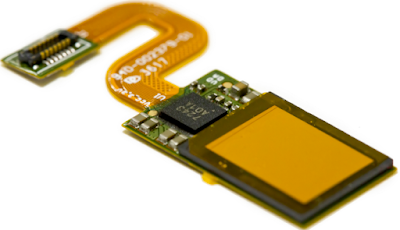Most of us were really moved by the rumor about Apple iPhone 10 that "it will have fingerprint sensor underneath the display which will provide a complete bezel-less design and become the only one of its kind" back in 2017.
But the Ace smartphone manufacturer Apple couldn't manage to do it right and skipped it completely and launched it with Face ID.
Then the rumors about Samsung's Galaxy Note 8 was catching fire and people were excited about it but same as the Apple, Samsung failed too.However, unlike the Apple, Samsung didn't skip the traditional fingerprint sensor from the phone which was a great move.
By joining the hands with a computer manufacturing company named Synaptics, Vivo managed to launch a smartphone (Vivo X 20) in CES 2018 which houses an Under-Display Fingerprint Sensor.
Now you might be wondering, how does it work, right? I will tell you all about it in this blog post.
How Does it Work?
It is developed by Synaptics and named as Clear ID FS9500.It is an optical fingerprint scanner and it works, same as the traditional optical scanners work but with some modification in its implementation.
It is placed behind the OLED panel in Vivo X 20 and it uses the gaps between the pixels of the OLED panel to its advantage and manages to see the user's finger through them.
It takes the image of the finger placed on the screen in very high resolution and contrast than any other regular camera, then the algorithm detects a unique pattern of your finger by analyzing the image thoroughly for the lightest and the darkest part in it. It analyzes the ridges and the valleys of the finger.
Obviously, it is very dark when the finger is placed on the display when the device is locked so these scanners have an array of LEDs to illuminate the finger while taking pictures of the finger.
Being optical scanner, it might not be faster than traditional capacitive scanners but it is as faster as the other biometric option such as 3D facial recognition like the one found on Apple iPhone 10 and it is highly secure too.
Limitations:
1) Speed
- It is not as fast as the capacitive fingerprint scanner but it is not that slow as well, it takes around 0.06 to 0.08 sec to unlock the phone.
2) Fingerprint Recognition Through any type of protecting glass
- It is supposed to work accurately if the glass's thickness does not increase 1.5mm.
- If it thicker than 1.5 mm then it may misbehave and may not work properly.
Advantages:
- Being placed underneath the display, the sensor will help the manufacturers make their phones bezel-less and customers will get to enjoy a great screen to body ratio in upcoming phones.
- It can work with wet, dry or cold fingers while the regular scanners won't.
- It comes with the anti-spoofing technology called SentryPoint Security Suit.
- A unique characteristic of this sensor is that it has enrolment and match in the sensor itself - completely isolated from the host processor.
- It comes along with other features such as a cryptographic engine on the chip, TLS1.2 encrypted secure communications to the host, a unique key generation module, and FIDO UAF Authenticator.
I hope, now you know how an under-display fingerprint scanner works.
If you have any questions then leave them in the comment section below. I will get back to you.


Great stuff.....
ReplyDelete